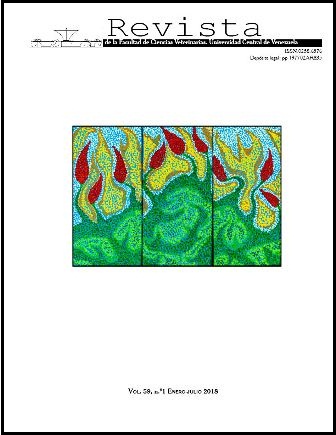LONGANIZAS ARTESANALES DE CABRA (Capra hircus) COMO FUENTE NATURAL PARA AISLAR E IDENTIFICAR BACTERIAS ÁCIDO LÁCTICAS NATIVAS COMO BIOCONSERVADORES
Contenido principal del artículo
Resumen
Las longanizas son una fuente de bacterias ácido-lácticas beneficiosas, que se desarrollan en su ambiente natural y que poseen capacidad conservadora y de interés biológico, como cultivos iniciadores bacterianos. El propósito de esta investigación, fue el de identificar a dichas bacterias. Para ello, se procesaron muestras de longanizas artesanales, de las localidades de La Cruz de Taratara, Santa Cruz de Pecaya, El Paraíso y Pecaya, respectivamente, en la parroquia Sucre del municipio Sucre del estado Falcón. Se obtuvieron tres aislados bacterianos, a saber: F1VEN, F2VEN y F3VEN, los cuales fueron sometidos a determinaciones microbiológicas, para la identificación fenotípica y para pruebas de fermentación de azúcares. Las muestras se sometieron al método de identificación molecular, para determinar el género y la especie. Para ello, se utilizó la técnica molecular de la reacción en cadena de la polimerasa (PCR, por sus siglas en inglés), con los cebadores universales HDA1 y WLAB2, para amplificar los fragmentos de las regiones variables del gen ADNr 16S. Los productos resultantes de la amplificación se purificaron y se obtuvo su secuencia, a través de Macrogen, Seúl, República de Korea. Las secuencias parciales de nucleótidos obtenidas, se alinearon con secuencias depositadas en la base de datos del GenBank, y se determinó el porcentaje de similitud para la identificación, a nivel de género y especie, de las cepas nativas, con el programa BLAST. Se logró la identificación de tres aislados nativos de esta fuente natural, con potencial biotecnológico para la conservación de longanizas.
(Palabras clave: biotecnología; bioconservación; longaniza de cabra; iniciador bacteriano; gen adnr 16s)
Abstract
Sausages are a source of beneficial lactic-acid bacteria, which develop in their natural environment and possess both a biopreservation capacity and biotechnological interest as bacterial starter cultures. The purpose of this investigation was to identify these bacteria. To carry out the experiment, samples of artisan sausages from the localities of La Cruz de Taratara, Santa Cruz de Pecaya, El Paraíso, and Pecaya, respectively, located in the Sucre parish of the Sucre municipality in the State of Falcón, Venezuela, were processed. Three bacterial isolates were obtained, namely: F1VEN, F2VEN and F3VEN, which were subjected to microbiological determinations, for the phenotypic identification and tests of fermentation of sugars. Samples were identified with the molecular identification method, to determine the genus and the species. To perform this identification, the molecular technique of the polymerase chain reaction (PCR), with the universal primers HDA1 and WLAB2, was used, to amplify the variable regions of the 16S rADN gene. The resulting products of amplification were purified and their sequence was obtained through the Genome Sequencing Service of Macrogen, Seul, Republic of Corea. The partial sequences of nucleotides obtained were aligned with sequences deposited in the GenBank database, and the percentage of similarity for the identification of native strains, at a genus and species level, was determined for the identification, with the computer program BLAST. The identification of three native isolates from that natural source, with biotechnological potential for preservation of sausages was achieved.
(Key words: biotechnology; bioconservation; goat’s sausage; bacterial starter; gen adnr 16s)

